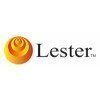Filter interviews by
Xplore-Tech Services Software Engineer Interview Questions and Answers
Xplore-Tech Services Software Engineer Interview Experiences
1 interview found
I applied via Naukri.com and was interviewed in Oct 2024. There were 2 interview rounds.
(1 Question)
- Q1. What is dependency injection
- Ans.
Dependency injection is a design pattern in which components are given their dependencies rather than creating them internally.
Dependency injection helps in achieving loose coupling between classes.
It allows for easier testing by providing a way to mock dependencies.
There are three types of dependency injection - constructor injection, setter injection, and interface injection.
(1 Question)
- Q1. Explain solid principles
- Ans.
SOLID principles are a set of five design principles that help make software more maintainable, flexible, and scalable.
Single Responsibility Principle (SRP) - a class should have only one reason to change
Open/Closed Principle (OCP) - classes should be open for extension but closed for modification
Liskov Substitution Principle (LSP) - objects of a superclass should be replaceable with objects of its subclasses without a...
Interview Preparation Tips
Skills evaluated in this interview
Top trending discussions






Interview questions from similar companies

Senior Software Engineer Interview Questions & Answers
Valenta AI Private Limitedposted on 12 Mar 2024
I appeared for an interview in Feb 2024.
(1 Question)
- Q1. Basic Questions related to RPA

Interview Questionnaire
1 Question
- Q1. Why should i choose you

Customer Service Associate Interview Questions & Answers
Altius Customer Servicesposted on 8 Nov 2022
I applied via Referral and was interviewed in May 2022. There were 4 interview rounds.

General aptitude questions on GK and maths
(2 Questions)
- Q1. Description of previous experience
- Q2. Current package and Salary expectation
(1 Question)
- Q1. Operations interview round about experience and skills
Interview Preparation Tips

I appeared for an interview in Jun 2021.
Interview Questionnaire
5 Questions
- Q1. What's your daily routine?
- Q2. Tell me about your experience?
- Q3. Speak on any Historical Building.
- Ans.
Taj Mahal - A white marble mausoleum in Agra, India
Built by Mughal Emperor Shah Jahan in memory of his wife Mumtaz Mahal
Considered as one of the Seven Wonders of the World
Construction took over 20 years to complete
Inscribed with Quranic verses and intricate floral designs
Attracts millions of tourists every year
- Q4. Why do you want to join BPO?
- Q5. Difference between Customer support and BPO?
- Ans.
Customer support is a part of BPO which deals with providing assistance to customers regarding products or services.
BPO includes a wide range of services like customer support, technical support, sales, etc.
Customer support is specifically focused on addressing customer queries and concerns.
BPO may involve outsourcing services to other countries for cost-effectiveness.
Customer support may be provided through various ch...
Interview Preparation Tips

I applied via Referral and was interviewed in Nov 2022. There were 2 interview rounds.

(2 Questions)
- Q1. Tell me about your self
- Q2. Are you comfortable to talk in English

I applied via Referral and was interviewed in Dec 2022. There were 2 interview rounds.

(2 Questions)
- Q1. Tell me something about yourself than asking to privious job details if you are experienced than salary expectations.
- Q2. Tell me something about for Mumbai
Interview Preparation Tips

Customer Service Executive Interview Questions & Answers
Elcamino Softwareposted on 23 Aug 2021
I applied via Apna Jobs and was interviewed in Jul 2021. There was 1 interview round.
Interview Questionnaire
3 Questions
- Q1. I was interviewed in month of August the question goes like this 1. Were did the Olympians held in the year 2020
- Q2. 2.how many medals have won by our country
- Q3. 3.rest all about the family background
Interview Preparation Tips

Customer Service Associate Interview Questions & Answers
Elcamino Softwareposted on 22 Sep 2021
I applied via Walk-in
Interview Questionnaire
2 Questions
- Q1. Normal written test
- Ans. They give you a 2 page test that includes basic spellings and a short note on given topic
- Q2. About interview
- Ans. After normal introduction they check communication skill in English
Interview Preparation Tips

Customer Service Associate Interview Questions & Answers
Elcamino Softwareposted on 7 Dec 2023
I applied via Walk-in and was interviewed before Dec 2022. There were 4 interview rounds.

Aptitude roud was medium
(1 Question)
- Q1. Basic questions about yourself and knowledge about bpo
(1 Question)
- Q1. Basic questions about bpo, typing speed etc
Interview Preparation Tips
Xplore-Tech Services Interview FAQs
Tell us how to improve this page.
Xplore-Tech Services Interviews By Designations
- Xplore-Tech Services Customer Service Associate Interview Questions
- Xplore-Tech Services HR Executive Interview Questions
- Xplore-Tech Services Customer Service Executive Interview Questions
- Xplore-Tech Services Quality Analyst Interview Questions
- Xplore-Tech Services Software Engineer Interview Questions
- Xplore-Tech Services Customer Care Executive Interview Questions
- Xplore-Tech Services Legal Associate Interview Questions
- Xplore-Tech Services Executive Accountant Interview Questions
- Show more
Interview Questions for Popular Designations
- Senior Software Engineer Interview Questions
- Associate Software Engineer Interview Questions
- Softwaretest Engineer Interview Questions
- Software Engineer Trainee Interview Questions
- Software Developer Intern Interview Questions
- Software Developer Interview Questions
- Software Development Engineer Interview Questions
- Junior Software Developer Interview Questions
- Show more
Xplore-Tech Services Software Engineer Interview Process
based on 1 interview
Interview experience
Interview Questions from Similar Companies
|
Customer Care Executive
32
salaries
| ₹1.2 L/yr - ₹3.2 L/yr |
|
Customer Service Executive
32
salaries
| ₹1.2 L/yr - ₹2.6 L/yr |
|
Customer Service Associate
31
salaries
| ₹1 L/yr - ₹3 L/yr |
|
Quality Analyst
26
salaries
| ₹1.5 L/yr - ₹4 L/yr |
|
Team Lead
18
salaries
| ₹1.6 L/yr - ₹6 L/yr |

Athena BPO

Metriqe Solutions

Imarque Solutions

Elcamino Software
- Home >
- Interviews >
- Xplore-Tech Services Interview Questions >
- Xplore-Tech Services Software Engineer Interview Questions










